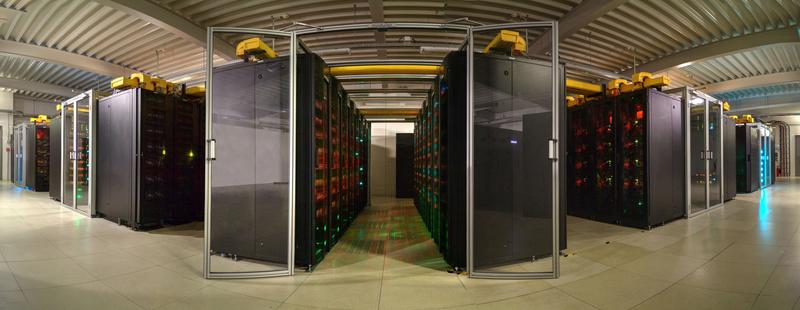
Mistral Supercomputer’s Final Expansion Starts at DKRZ

On July 4th, 2016, the final expansion stage of the high-performance computing system Mistral has started its operation at the German Climate Computing Center (DKRZ) in Hamburg.
M. Böttinger/DKRZ
On the TOP500 list of the most powerful supercomputers, which was published during the International Supercomputing Conference (ISC’16), the final expansion stage of Mistral at DKRZ occupied position no. 33 worldwide. At present, Mistral is the 5th most powerful high-performance computer in Germany.
Roughly 3,000 compute nodes of type bullx DLC 720, provided by Atos/Bull, having a total number of more than 100,000 processor cores on the basis of Intel processors of types Xeon E5-2680v3 12C with a clock rate of 2.5 Gigahertz (Haswell) and E5-2695V4 18C with a clock rate of 2.1 Gigahertz (Broadwell) provide the computing capacity.
This is the largest high-performance computing system by company Atos/Bull on the TOP500 list. Due to the warm-water cooling system, which cools the CPU and main memory, Mistral is very energy-efficient: despite a 20-fold increase in performance compared to its predecessor, HLRE-II “Blizzard”, Mistral consumes slightly less electrical power.
In order to meet the very data-intensive requirements of climate modelers, the system stands out from most other high-performance computers by having an especially large and powerful parallel file system. Mistral’s parallel file system by company Seagate has a capacity of 54 petabytes and occupies position no. 2 on the vi4io.org list, which compares the largest file systems worldwide. The peak transfer rate of the Lustre-based file system is 450 Gigabytes/s. This is the data volume of approximately 100 full-length movies per second!
The entire system consists of about 80 telephone booth-sized cabinets, most of them weighing more than a ton, and being interconnected by bundles of fiber and high-performance network components by Mellanox.
Using Mistral, climate researchers are able to perform climate simulations at a higher resolution, to include additional processes in earth system models, or to reduce uncertainties in climate projections.
Computations are currently being planned for the extensive international model intercomparison project CMIP6 (Coupled Model Intercomparison Project Phase 6), thereby, for the German contribution to the next IPCC Report.
Another project examines the formation of clouds and precipitation in greater detail: Mistral enables scientists to perform high-resolution regional simulations at a grid resolution of only 100 meters all of Germany for the first time, ever. This facilitates the explicit computation of small-scale processes such as cloud formation and precipitation, which must be parameterized in coarser models.
http://www.dkrz.de/about/media/galerie/Media-DKRZ/hlre-3 – TOP500 list
http://www.top500.org/list/2016/06/ – TOP500 list
http://www.vi4io.org/hpsl/start – List of the top storage systems












